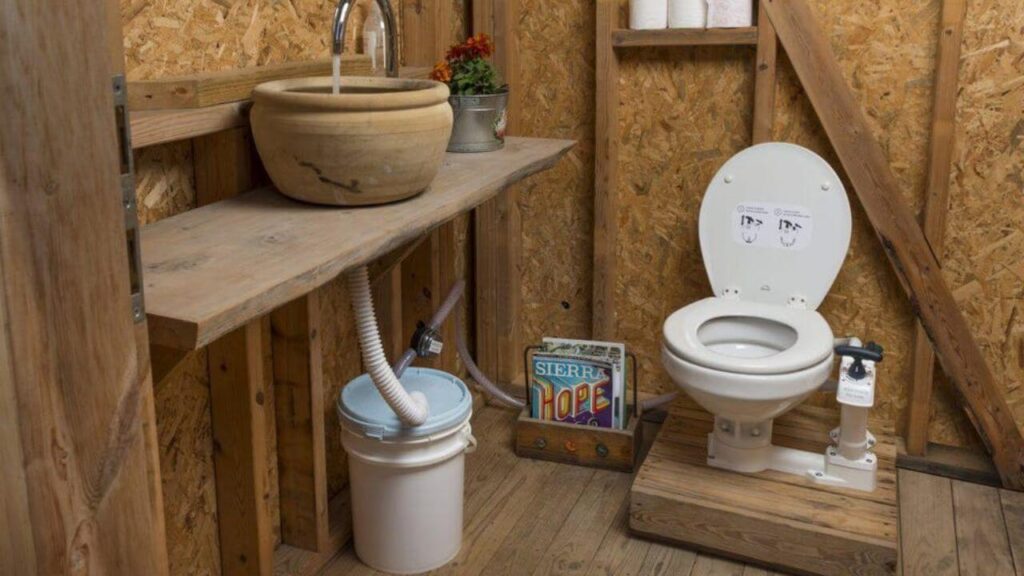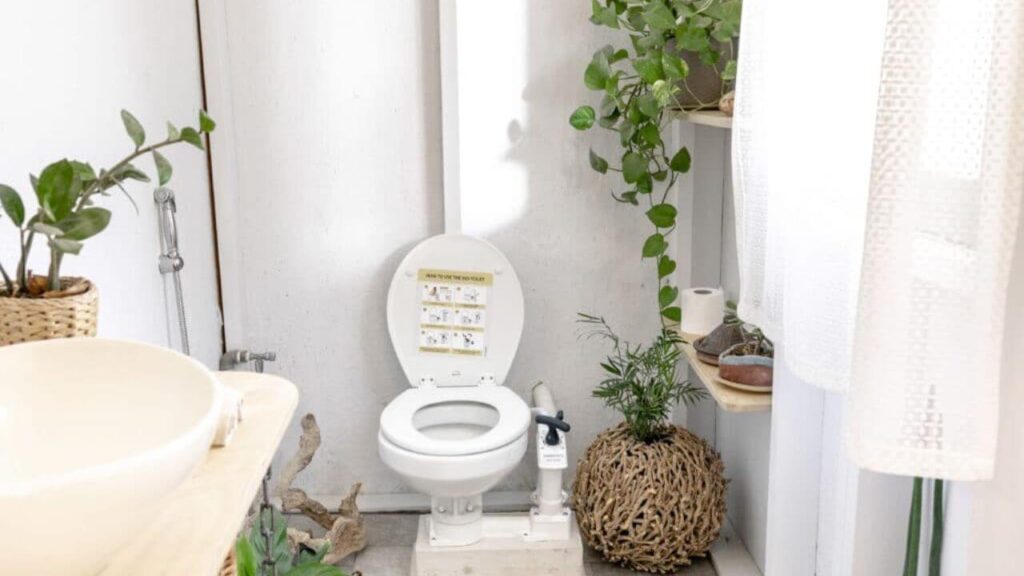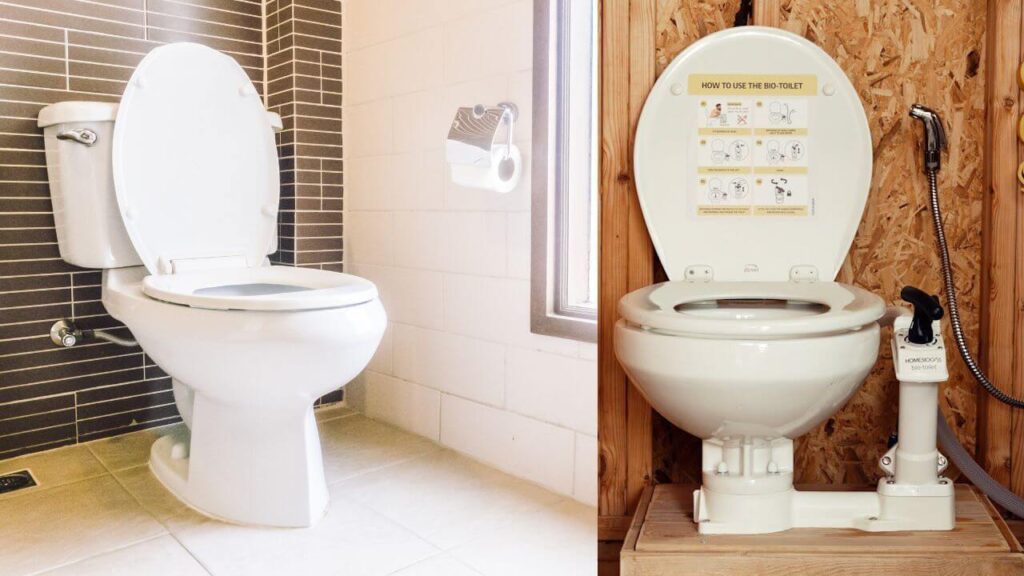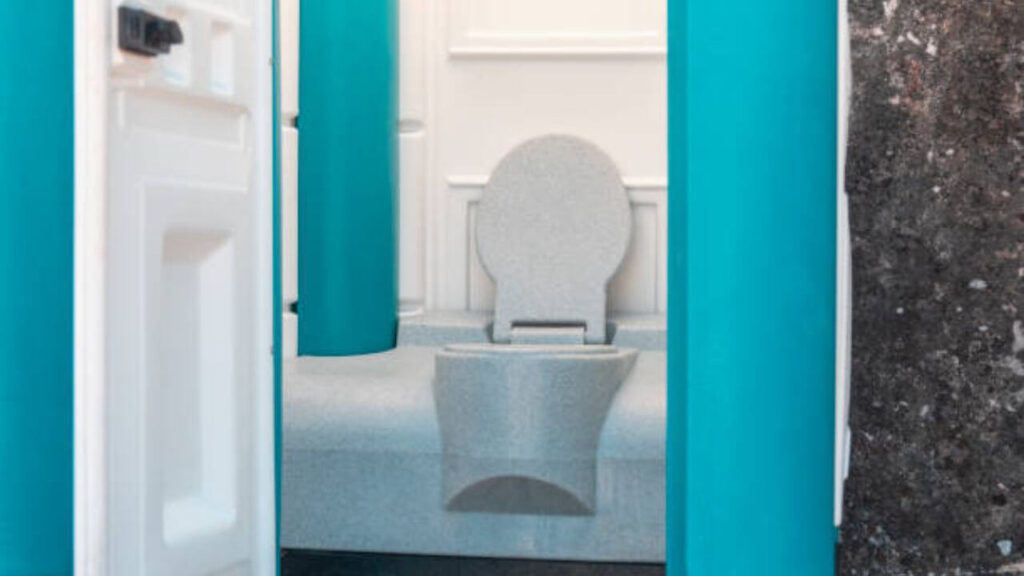In the 21st century, sanitation and hygiene are paramount for every nation striving to have a decent standard of living and a healthy population.
One particular technology which has made remarkable progress over the past few years is bio-toilets.
They provide us with sustainable solutions through their ability to efficiently convert human waste into harmless products.
Like water, gasses, and nutrients without any chemical or mechanical treatments while saving much-needed resources in our environment.
This blog post will explore what makes these incredible marvels unique.
And why they could be game-changers for countries struggling with managing their sewage infrastructure. So keep reading as we dive deep into the world of Bio Toilets.
Bio Toilet | An Overview

Bio toilets are a unique invention that offers an environmentally friendly solution to traditional toilets: they don’t require water for flushing and use bacteria to break down human waste.
This means no need for piping, maintenance, or costly sewage systems otherwise needed for safe and efficient waste disposal.
A bio-toilet consists of a septic tank with anaerobic bacteria that decompose the solid matter. So that it can be safely disposed of without any impact on the environment.
The biogas produced can be used in cooking or heating applications, while the liquid waste is ideal as a fertilizer.
Practically, this makes bio-toilets extremely cost-effective since alternative technologies are more expensive in terms of initial installation and more extended-term maintenance costs.
Furthermore, bio-toilets are very simple to set up and maintain—making them great for smaller communities, particularly those lacking proper infrastructure or access to clean water supplies.
Also Read About:
How Does Bio Toilet Work?
I am sure now, you would be wondering how this bio toilet works. Well, it’s pretty simple.
Working under the principle of anaerobic digestion, a bio-toilet uses a mixture of bacteria and chemicals to break down human waste into water and odorless gasses.
This process is safe and efficient, with two sealed tanks employed – one for extracting liquids and the other for converting solid waste into compost.
A perfect solution in remote locations or areas where waste collection can’t be effectively done!
And the best part is that it’s affordable and environmentally friendly, too; this makes it an increasingly popular choice amongst those looking to conserve resources.
Related Articles:
How Does a Push Button Toilet Flush Work
Types Of Bio Toilet
Do I tell you that Bio toilets, also known as composting toilets? A toilet that uses bacterial decomposition to turn human waste into compost.
This technology has been around since the 1970s and is becoming increasingly popular due to its environmental benefits. But what types of bio-toilets are there?
Let’s explore the different types of these innovative systems and how they work.
Aerobic Composting Toilets
The most common type of bio-toilet is an aerobic composting toilet. These systems use oxygen-rich air to speed up the decomposition process.
The waste is mixed with sawdust or other organic materials, which helps keep the material aerated while breaking down.
Aerobic composting toilets typically require electricity and need to be connected to a water source to flush out the waste after it has decomposed.
Because of this, these types of toilets are most often used in residential settings or other places where access to electricity and water is available.
Anaerobic Composting Toilets
Anaerobic composting toilets are similar to their aerobic counterparts but operate without oxygen.
Instead, the process works by using bacteria that thrive in an oxygen-free environment, such as methane-producing bacteria, which break down the organic matter into a usable fertilizer or soil amendment.
Anaerobic composting systems don’t require electricity or a water source, making them ideal for remote locations where access to utilities may be limited.
However, these systems take longer than aerobic ones because they rely on bacteria that can only break down organic matter at low temperatures and pressures over time.
Composting Urinals
Composting urinals are another bio-toilet system that uses bacterial decomposition processes to break down liquid waste from urinals into fertilizer or soil amendment products.
Composting urinals don’t require any flushing system as they rely on natural biological processes for decomposition.
They also don’t need electric power or water sources like other bio toileting systems do, which makes them ideal for areas where access to utilities may be limited or nonexistent.
Also Read:
How To Use Bidet Toilet In Italy
Detailed Guide About Squat Toilet In Italy
The Benefits Of Bio Toilet

Well, I must say that Bio toilets are a revolutionary way to manage both water and waste.
They not only reduce water usage but also help to create a cleaner environment by eliminating disease-causing bacteria.
So, let’s look at some of the incredible benefits of bio-toilets and how they can improve our lives.
Water Conservation
The main benefit of using bio-toilets is that it reduces water consumption drastically. This is because the toilet does not use any water for flushing down waste.
Instead, it uses a natural process known as ‘anaerobic digestion’ to break down the waste into harmless elements such as carbon dioxide and methane gas.
This process also produces a small amount of clean water that can be used for other purposes.
Using bio-toilets, we can conserve up to 80% of our water usage, which would otherwise be wasted in traditional flushing methods.
Eliminates Disease-Causing Bacteria
Bio toilets have another significant benefit as they help to eliminate disease-causing bacteria from our environment.
This is because when the waste is broken down in anaerobic digestion, all harmful pathogens are destroyed, making it safe for reuse or disposal into the environment.
This makes them perfect for areas where normal sanitation facilities are not available or difficult to access due to geographical constraints, such as remote mountainous regions or islands.
In addition, bio-toilets provide an efficient way of managing human waste without adversely affecting our environment.
Reduces Wastewater Treatment Costs
Another benefit of using bio-toilets is that it helps reduce wastewater treatment costs significantly.
As there is no need for additional chemicals or treatments for wastewater before being released back into our environment.
Since bio toilet systems use natural processes such as anaerobic digestion to break down waste.
There is no need for expensive treatments or chemical additives, which results in significant cost savings in terms of wastewater management and treatment costs over time.
In addition, this also helps reduce pollution levels in our environment since fewer chemicals are used when treating wastewater before releasing it back into nature.
Eco-Friendly
Bio-toilets are an eco-friendly way to get rid of human waste. They don’t require electricity or water, making them ideal for homes without power or running water.
In addition, the bacteria used in bio-toilets break down waste into harmless byproducts that can be safely released into the environment without harming it.
So not only do you save on electricity and water costs, but you also help protect the environment!
Cost Effective
Bio-toilets are also cost-effective. Since they don’t require electricity or plumbing, they can be installed in areas where traditional toilets aren’t practical (like remote locations).
This means they can provide an affordable solution for those needing it most.
In addition, since they don’t require much maintenance, you won’t have to pay for costly repairs or replacement parts like traditional toilets.
Easy To Maintain
Finally, bio-toilets are very easy to maintain. You have to occasionally add the bacteria and empty the tank when it gets full – something that can quickly be done by hand without any special equipment or tools.
This makes them great for those who want a low-maintenance option without sacrificing quality or performance.
Also read:
Does Bamboo Toilet Paper Clog Pipes
Some Drawbacks Of Bio Toilet
Although bio-toilets are a great way to reduce environmental impact, they have some drawbacks.
- One drawback of using a bio-toilet is that it sometimes provides a different level of sanitation than traditional septic systems offer due to its limited capacity for waste disposal.
- Additionally, because these toilets rely on natural processes (such as bacteria) to break down waste materials, they don’t provide as much cleaning power as standard flush toilets do—resulting in odors if not regularly maintained and emptied out.
- Furthermore, most models require specific types of chemicals to properly break down solid wastes, which may be difficult (and expensive) to obtain in some areas.
- Finally, while some models are designed with energy-saving features such as LED lights and air filters, most still require an electrical outlet or battery pack to work correctly—which means that they may not be suitable for homes that cannot access electricity quickly or cheaply.
Difference Between Normal Toilet And Bio Toilet

You all agree that with so many toilet options on the market, it can be hard to decide which one is best for your bathroom.
One option is the traditional toilet, but bio-toilets are becoming increasingly popular.
So what’s the difference between these two types of toilets? First, compare regular and bio-toilets to know which is best for your bathroom.
| Features | Bio Toilet | Normal Toilet |
| Water Usage | 1 gallon per flush | 5 gallons per flush |
| Process Of Break Down Waste | Use natural process | Rely on harsh chemicals |
| Maintenance | Easy to maintain | Needs maintenance after every few months |
| Installation | Can install anywhere | Needs specific area |
The Biggest Difference: Water Usage
The critical difference between regular toilets and bio-toilets is water usage.
Traditional toilets use about 5 gallons of water per flush, while bio-toilets use only about 1 gallon of water per flush.
This means that you can save up to 80% on your overall water bill over time with a bio-toilet! Plus, since they use less water, they are much better for the environment.
Bio-Toilets Are Easier to Clean
Bio-toilets are also much easier to clean than regular toilets because they don’t require any harsh chemicals or scrubbing.
All you need is warm water and mild soap to keep it clean and sanitary. This makes them ideal for people who don’t like spending hours cleaning their toilet every week!
Also Read:
What Do Hotels Use To Clean Toilets
Bio-Toilets Use Natural Processes
Unlike traditional toilets, which rely on chemical processes to break down waste, bio-toilets use natural processes like fermentation and anaerobic digestion.
This means that instead of relying on harsh chemicals to break down waste, the bacteria already in the environment do all the work for you!
This makes them much safer for both humans and the environment.
Can We Install Bio-Toilet At Home?

Have you ever wondered if it’s possible to install a bio-toilet at home?
It may sound like something out of a sci-fi movie, but the answer is yes! Installing a bio-toilet in your home has many benefits and can be done relatively quickly.
Let’s discuss why you should consider installing a bio-toilet in your home, what components are involved in the process, and how to get started.
Benefits of Installing a Bio Toilet At Home
Installing a bio-toilet at home offers several advantages over traditional septic systems.
For one, they require little maintenance since they don’t require pumping or cleaning out as traditional systems do.
They also offer more efficient processing than traditional systems since all waste materials are broken down into harmless substances before being released into the environment.
Finally, they provide greater control over wastewater management since homeowners can choose how much wastewater is discharged from their property at any time.
How To Install a Bio Toilet
Components Needed to Install a Bio Toilet At Home
To install a bio-toilet at home, you will need several components, including an anaerobic digester tank, piping, valves, and controllers.
The anaerobic digester tank houses the microorganisms that break down the waste materials into water and gas.
At the same time, the piping helps transport these gasses away from the area where they were produced.
Valves help regulate how much wastewater is released from the property, while controllers help monitor and adjust the flow of wastewater throughout the entire system.
It’s important to note that you will also need professional installation for this system to ensure the proper functioning of all parts and safety protocols being observed during setup and operation.
Step 1: Types of Bio-Toilets
The first step when considering installing a bio-toilet is understanding the available types. Generally speaking, there are two types—portable and permanent.
Portable bio-toilets are powered by electricity or propane, while permanent systems rely on natural processes such as bacteria and enzymes to break down waste.
Portable toilets are great for camping trips or other temporary uses, but you should opt for a permanent system for a home installation.
Step 2: Installation Process
Once you have chosen the type of bio-toilet that best suits your needs, it’s time to think about installation.
This process will vary depending on the type of toilet you choose.
It typically involves connecting the system to your water supply and sewage pipes before testing it with water and waste products.
Most models come with detailed instructions, making installation more straightforward; if not, professional help may be required (and recommended).
Maintenance & Cost Considerations
Once installed and tested, maintenance should be relatively straightforward.
However, it is essential to note that some models require regular emptying (usually every six months) to function correctly.
This means that additional cost considerations may be associated with running a bio-toilet at home.
So make sure you factor these into your budget before making any decisions!
Also Read:
How Long After Installation Can A Toilet Be Used
How Long Does It Take To Remove A Toilet
Bottom Line
By now, you should have a comprehensive understanding of bio-toilets.
These waterless and odorless wonders are the future of sanitation, offering a sustainable and eco-friendly solution that is much needed in today’s world.
I hope this guide has helped answer any questions you may have had about bio-toilets.
If not, please don’t hesitate to contact me for further information or assistance. Thank you for reading!
